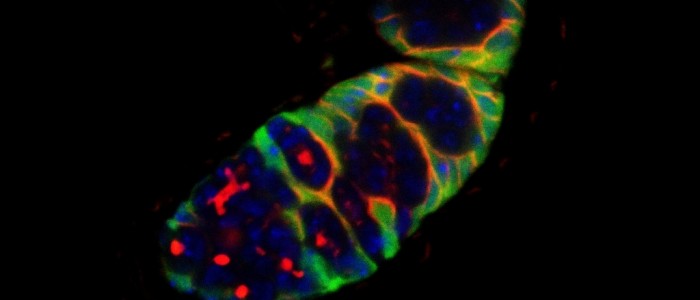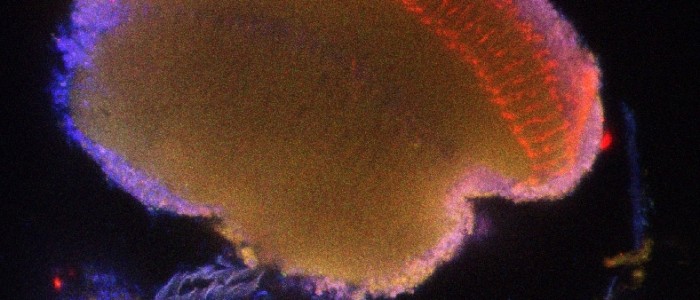Welcome to the Ruohola-Baker lab
The Ruohola-Baker laboratory studies the molecules and cellular properties that are required for stem cell states and their differentiation capacity, both in normal and pathological situations. During the recent years the laboratory has shown that microRNAs and HIF pathways play key roles in regulating adult and embryonic stem cell self-renewal in model organisms as well as in hESC and iPSC. The laboratory presently works on three questions: 1) what are the metabolic determinants of stem cells, 2) what are the key microRNAs that induce cardiomyocyte maturation and 3) what is the molecular mechanism of stem cell protection against apoptosis.
Metabolic Determinants of Stem Cells
In particular, the laboratory is dissecting the differences between two human embryonic stem cell (hESC) stages, the newly derived naïve hESC and primed hESC. Since naïve human embryonic stem cells show higher developmental potential than primed hESCs, it is critical to understand the key molecular differences between these pluripotent cell types. We have identified metabolic differences that regulate the hESC epigenetic state and will define the epigenetic regulators in the process. The working hypothesis is that differential metabolites between pluripotent stages may control epigenetic dynamics and signaling and the goal is to identify the epigenetic modifiers that are controlled by metabolic differences.
miRNA function in Stem Cells and Regeneration
One of the key characteristics of stem cells is their capacity to self-renew throughout the lifetime of an animal. Stem Cell self-renewing division is tightly controlled process; too little division disrupts the homeostasis of the tissue while too much can result in cancer. Ruohola-Baker laboratory has shown that miRNAs are required for stem cell division in Drosophila and human and the goal now is to identify and analyze the regulation of critical miRNAs in stem cell based regeneration. In particular, the laboratory studies the maturation process that takes place during the transition from fetal to adult heart. In metazoans a switch in energy metabolism from glycolysis to fatty acid (FA) oxidation is observed during this transition. Many heart diseases, for example most muscular dystrophies are manifested as late onset heart defects, during cardiomyocyte postnatal maturation. However, human cardiomyocyte maturation is poorly understood process at the moment. Using large scale profiling methods, Ruohola-Baker laboratory showed that the molecular signatures in in-vitro matured hESC derived cardiomyocytes are similar to those seen in the in-vivo derived mature cardiac tissues, thus enabling them to be used as excellent model to identify the metabolites and microRNAs that accelerate human cardiac maturation. The laboratory has already found key microRNAs in the process and shown that they regulate growth, force and the fundamental metabolic switch to fatty acid utilization in cardiomyocyte maturation. Hence these miRNAs and their targets now reveal themselves as key tools for disease interventions.
Molecular Mechanisms of Stem Cell resistance to apoptosis
Ruohola-Baker laboratory is also interested in understanding the molecular networks and signaling pathways that protect stem cells against cell death using the excellent adult stem cell models in Drosophila melanogaster. It is critical to understand the mechanisms for stem cell resistance to cell death, since cancer stem cells that are also highly apoptosis resistant may utilize similar mechanisms to escape chemo- and radiotherapies. The laboratory has shown that apoptotic differentiating cells send protective signals to the adult stem cells for future repopulation of the tissue. The goal now is to dissect the molecular nature of these survival signals. Human embryonic stem cells and cancer stem cells may utilize similar survival strategy.
Drosophila as a model for Human diseases
Over the years Ruohola-Baker laboratory has studied DMD and cancer using Drosophila as a model. Through unbiased Drosophila interaction screen they discovered that increasing the sphingosine- 1-phosphate pathway (S1P) has therapeutic effects on muscular dystrophies. The lab is now in the process of screening and analyzing small molecules that are beneficial for maturation and regeneration of muscle in DMD model in Drosophila. These studies are directed towards a long-term goal of stem cell and small molecule based therapeutics. Most of our studies of the Notch pathway have been aimed at understanding how this pathway acts in patterning and how it interacts with other signaling pathways. During these studies the laboratory discovered that Notch also acts in control of cell division.


















